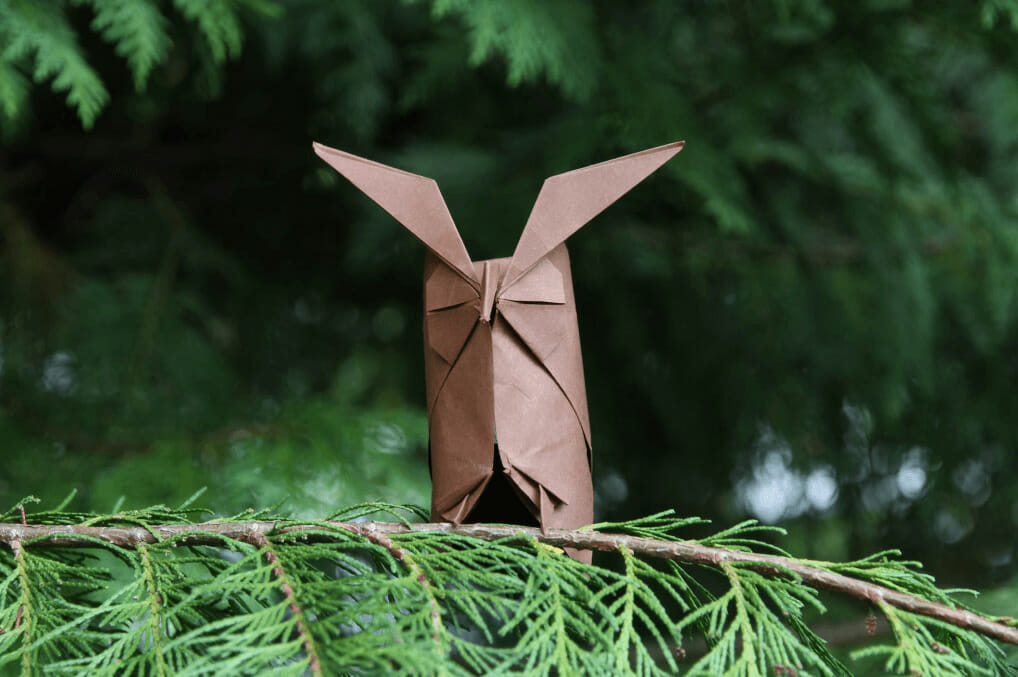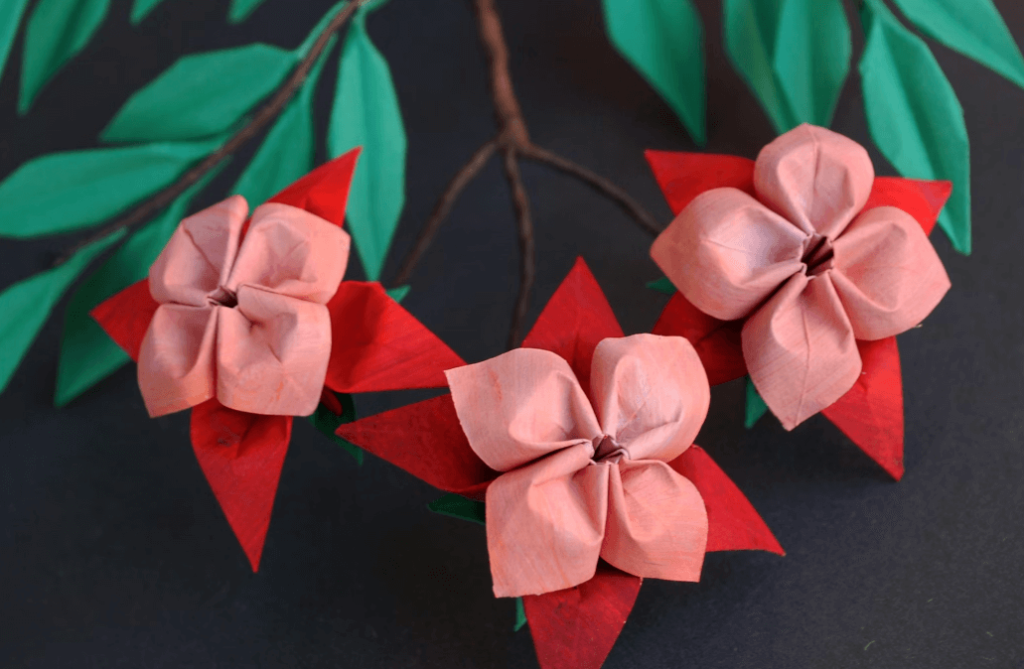
Table of Contents
Origami is an old Japanese art of paper folding that has recently gained popularity as a hobby. Origami involves taking a square piece of paper and transforming it into a beautiful three-dimensional object, such as a bird, flower, or even a geometric design. The origami craze has been growing for years and continues to spread to people of all ages and backgrounds who enjoy its simplicity and meditative nature.
One of the primary benefits of origami is its ability to provide stress relief and mindfulness. Folding paper can be incredibly calming and therapeutic, as it requires focus and concentration, helping to relieve stress and tension. In addition, origami is a fun and creative hobby that can be done alone or with friends and family.
This blog introduces origami and explores the benefits of this fascinating and rewarding hobby. Whether a seasoned origami enthusiast or a beginner, you will find helpful information and tips for improving your origami skills and inspiration for your next project. From the history of origami to the latest trends and techniques, this blog is your go-to resource for everything related to origami. So, if you are ready to start your origami journey, let’s get started!
Materials and Tools for Origami
Origami is an art form that requires only a few simple materials and tools. However, to make origami, you’ll need a few essential items, including origami paper, a cutting mat (if desired), and a cutting tool. Origami paper is a crucial component of origami, as it is designed specifically for the art form and has specific properties that make it ideal for folding. Origami paper is typically thin, lightweight, and easy to fold. It also comes in various colours and patterns, which can add creativity and personality to your origami creations.
When selecting origami paper, you must consider the type of origami you’ll be doing and the desired outcome. For example, choose thicker, heavier-weight paper to create intricate, detailed origami designs. But if you’re looking for a more traditional look, choose a lighter-weight, thinner paper.
In addition to origami paper, you may also want to invest in a cutting mat and cutting tool. A cutting mat will help protect your work surface and make cutting your paper into precise shapes easier. A cutting tool, such as a craft knife or scissors, will allow you to cut your origami paper into the desired shapes and sizes. You must store and organise your origami materials and tools, keeping them in a safe, dry place. You may also consider using containers or storage bins to keep your materials and tools organised and easily accessible.
Basic Origami Techniques and Folds
Origami is an art form that requires a combination of creativity, skill, and patience. It’s essential to have a solid foundation of basic origami techniques and folds to create beautiful and intricate designs. These techniques are the building blocks for more complex structures and can be mastered with practice and patience.
In origami, there are two main types of folds: mountain and valley. Mountain folds are made by folding the paper up towards you, while valley folds are made by folding the paper away from you. These folds create the structure of the origami design and are essential for creating shapes, angles, and lines in your designs.
Basic Origami Techniques and Folds
The basic techniques and folds used in origami form the foundation for creating more complex and intricate designs. Therefore, to create stunning origami pieces, it is vital to master these basic techniques and folds.
In origami, there are two main types of folds: mountain folds and valley folds. Mountain folds involve folding the paper upward, while valley folds involve folding the paper downward. These folds create the basic structure of an origami design for creating various shapes, including squares, triangles, and rectangles. There are also reverse folds, which involve folding the paper in the opposite direction, and pleats, which include folding the paper back and forth.
Tips for Mastering Basic Origami Techniques and Folds
Mastering basic origami techniques and folds can be challenging, but with practice and patience, anyone can become an origami master. It is recommended to start with simple designs and gradually move on to more complex ones. It is also essential to follow instructions carefully and take time with each fold. By focusing on each step and practising regularly, you will soon find that you have developed a strong foundation in origami techniques and folds.
Origami can be a therapeutic and calming activity but also a challenge that requires patience and persistence. So keep going even if your first attempts turn out differently than you hoped. Practice is vital when it comes to improving your origami skills. It takes time and patience to develop mastery of origami, but the results are well worth it. Additionally, practice will help you become more familiar with the various techniques and folds, allowing you to easily create beautiful and intricate origami designs. So be patient and keep practising! The more you fold, the better you will become.
Origami Projects and Designs
Origami is a versatile and creative art form that offers various projects and designs. From simple models like the paper crane to more complex structures like modular origami and action origami, there’s something for every skill level and interest. So whether you’re experienced or a beginner origami enthusiast, there’s always a new project to try.
Origami projects can be classified into three main categories: simple, intermediate, and advanced.
- Simple projects are suitable for beginners and typically involve basic folds and techniques.
- Intermediate projects require more skill and experience and may incorporate more complex folds and designs.
- Advanced projects are more challenging and are best suited for experienced origami enthusiasts.
When selecting an origami project, choosing one appropriate for your skill level is essential. If you’re a beginner, it’s best to start with simple projects to help you build your skills and confidence. Then, as you progress, you can move on to more intermediate and advanced projects. Choose projects that interest you, as this will help keep you motivated and engaged.
Origami is an art form that encourages creativity and imagination. While following origami instructions is an excellent way to start, you can begin exploring your designs and ideas once you’ve mastered the basic folds and techniques. The beauty of origami is that there are no limits to what you can create. So be bold, be creative, and let your imagination run wild!

The most popular types of origami
Traditional Origami
Traditional origami refers to the conventional style of paper folding that originated in Japan. It is the most commonly recognised form of origami. It typically involves folding a single sheet of paper into a recognisable shape, such as a crane or a flower, without using scissors or glue.
Traditional origami is often characterised by its simplicity and elegance. The paper is folded in a series of precise and intricate steps, each of which is designed to create the desired shape. The finished product is often a work of art that showcases the skill and creativity of the paper folder.
Traditional origami can be a great way to develop your spatial reasoning, manual dexterity, and problem-solving skills. Additionally, it can be a form of mindfulness and relaxation, allowing you to focus on the present moment and forget the stresses of daily life.
Modular Origami
Modular origami is a type of origami that involves folding multiple identical units, which are then assembled to create a final piece. Unlike traditional origami, which usually involves folding a single piece of paper into a specific shape or design, modular origami involves creating multiple units and piecing them together.
This type of origami can create complex, intricate structures that are impossible with traditional origami techniques. The most common types of modular origami are the Japanese cube, the Sonobe unit, and the Chinese lantern. These structures are made by folding several identical units, which are then assembled to form a cube or lantern shape. The number of units used can vary; the higher the number, the more complex the final structure will be.
Action Origami
Action origami, also known as kinetic origami, is a type of origami that involves movement or action when the model is manipulated. This type of origami often requires additional folds and steps to create moving parts or mechanisms that result in unique movements, such as flapping wings, jumping frogs, or spinning tops.
One well-known example of action origami is the flapping bird, where a combination of folds and tucks create a model that flaps its wings when pulled gently on its tail. Another typical example is the jumping frog, where a series of folds creates a frog that jumps when its legs are pushed down and released.
Action origami can be more challenging than traditional origami as it often involves additional folds and steps to create the movement. However, it can also be enriching as the finished model can bring a lot of delight and surprise.
Action origami is not only entertaining, but it also requires careful planning and precision to ensure the movements work correctly. It’s a great way to challenge yourself and develop your origami skills, and the results can be pretty impressive.
Representative Origami
Representative Origami, also known as representational or realistic origami, is a style that focuses on creating models that accurately depict real-life objects, animals, or characters. Unlike traditional origami, which often employs simple, geometric shapes and symmetrical folds, representative origami can be much more complex and intricate, often requiring multiple steps and advanced techniques to achieve the desired outcome.
Representative origami models can range from simple depictions of animals, like a frog or birds, to more complex models, like cars, aeroplanes, and even people. These models are often made with special techniques, such as curved folds, to make the models look as lifelike as possible. The use of colour can also play an essential role in representative origami, adding depth and dimension to the models.
It is a popular form of origami among those who have developed a more advanced skill set in the art form and who are looking for a new challenge. It requires a lot of patience, persistence, and attention to detail, as each fold must be precise and carefully executed to achieve the desired outcome. Whether a seasoned origami artist or just starting, representative origami is a beautiful way to test your skills and explore new creative avenues within the art form.
Sculptural Origami
Sculptural origami is a type of origami that is focused on creating 3D structures and figures that are intricate and highly detailed. Unlike traditional origami, which is often focused on creating simple flat models or basic shapes, sculptural origami is about creating complex and intricate sculptures that showcase the artistic and technical skills of the origami artist.
Sculptural origami can encompass various styles and techniques, from creating realistic animal and human figures to abstract and surreal sculptures. This type of origami typically requires more advanced folding techniques, such as pleats, multiple layers, and wet folding. In addition, it often results in highly textured models with greater detail than traditional origami models.
Sculptural origami artists often use various materials beyond traditional origami paper, such as wire, foam, and other materials, to achieve the desired results. These materials can be used to create added structure or support for the models or enhance the sculptures’ general look and feel.
It is a highly creative and rewarding form of origami that many artists and enthusiasts enjoy. Whether you are an experienced origami artist looking to push the boundaries of your creativity or a beginner just starting to explore the world of origami, sculptural origami offers endless possibilities for expression and exploration.
Origami Tesselations
Origami tessellations are a type of origami that involves creating a repeating pattern of geometric shapes. Unlike traditional origami, which typically focuses on creating a single, recognisable form, origami tessellations are designed to repeat patterns covering an entire surface. As a result, they often feature complex, interlocking shapes and can be very intricate and detailed.
Origami tessellations can be created using several folding techniques, including pleating, crimping, and sinks and folds. The goal is to create an aesthetically pleasing pattern that can be repeated indefinitely. Some popular origami tessellations include the Miura-ori, the Kirigami, and the Meenakshi Mukerji patterns.
Creating origami tessellations can be a challenging and rewarding hobby. It requires a good understanding of the underlying mathematical concepts and principles and a high degree of precision and patience. However, the result can be a beautiful, intricate design that is truly a work of art.
Origami tessellations can also be used for various purposes, from decorating a room to making intricate and unique jewellery. The possibilities are endless, and the satisfaction of creating a beautiful, detailed design is unmatched.
Wet-Folding Origami
Wet-folding origami is a technique that involves dampening the paper before folding it. This technique was developed by master origami artist Akira Yoshizawa and is used to create delicate, sculptural origami figures. Wet-folding allows the paper to be moulded and shaped in a way that is impossible with traditional dry-folding methods, resulting in more fluid, organic shapes and curves. This technique is often used to make complex models that would be difficult or impossible to create using traditional origami methods.
When using this technique, it is critical to choose an absorbent paper that will hold its shape when wet, such as traditional Japanese washi paper. The paper is dampened with a sponge or spray bottle and then carefully folded while it is still damp. As the paper dries, it will hold its shape and maintain the form of the model.
This origami fold can be more challenging than traditional origami, but it is also gratifying. The ability to create fluid, organic shapes and curves open up a whole new world of possibilities for origami artists and designers. So if you’re looking to expand your origami skills and try something new, wet-folding is worth considering.
Kinetic Origami
Kinetic origami is a type of origami that involves movement or animation. It is also known as active origami or mechanical origami. This type of origami combines the traditional art of paper folding with mechanics and engineering to create models that move in intricate and captivating ways.
Kinetic origami models can range from simple toys that move with a gentle touch to complex structures that are powered by wind, light, or other external stimuli. The goal of kinetic origami is to create paper sculptures that are not only beautiful and elegant but also dynamic and interactive.
Some examples of kinetic origami include models that walk, jump, or flip when touched, fold and unfold in intricate sequences and change shape in response to various stimuli.
Creating kinetic origami requires a deep understanding of both origami techniques and mechanics. In addition, you should design the folding patterns carefully to ensure that the models move in the desired way. Finally, you must choose the materials carefully to ensure durability and stability.
This origami style is challenging and rewarding for both beginners and experienced origami enthusiasts. Whether you are looking to create simple toys or complex structures, the possibilities of kinetic origami are limited only by your mind and creativity.
These are just a few examples of many origami types practised. Regardless of the type, origami is a fun and rewarding hobby that everyone of all ages and skill levels can practice.

Basic Origami folds and terms
- Base: The starting point for creating an origami model, usually a flat piece of paper with a specific pattern of folds.
- Valley fold: A type of fold where you fold the paper inward, creating a V-shape.
- Mountain fold: A type of fold where you fold the paper outward, creating a peak.
- Reverse fold: A type of fold that involves folding the paper back on itself in the opposite direction of a typical fold.
- Pleat fold: A series of small, parallel folds that are made on a piece of paper.
- Crease: The line created by making a fold in a piece of paper serves as a guide for future folds.
- Squash fold: A type of fold where you flatten a portion of the paper to make it smaller.
- Pull-out: A technique where you pull a portion of the paper away from the primary model to create a new shape or design.
- Blintz fold: A fold that involves folding the paper diagonally to create a triangular shape.
- Petal fold: A type of fold used to create petal shapes in origami models.
- Crimp fold: A fold that involves creating a series of small, parallel creases in a piece of paper, which can be used to create various shapes.
- Reverse-fold: A technique where you fold the paper back on itself in the opposite direction of a normal fold.+
- Rabbit ear fold: a type of fold that involves creating two flaps of paper that resemble rabbit ears.
- Swivel fold: a type of fold that involves twisting the paper along a crease.
- Pleat and pinch: a combination of pleats and pinching to create a sculptural effect in origami.
- Kami: This is a term used in origami that refers to paper. The word “origami” originates from the Japanese words “ori,” which means “to fold,” and “kami,” meaning “paper”. Thus, origami means “folding paper”. The use of high-quality paper is essential in origami, as it affects the ease of folding and the model’s final appearance.
As a beginner, it is recommended to start with basic origami techniques and simple diagrams. Some popular and easy origami models include the paper crane, the boat, the flower, and the frog. These models typically only require basic folds and techniques, such as valley and mountain folds, which are beginner-friendly ways to start with origami and build up your skills. As you progress, you can move on to more complex models and techniques, including modular origami, action origami, and representational origami.
Origami Community and Resources
Origami is a hobby people enjoy worldwide, and there are many opportunities to connect with other origami enthusiasts. There are local and online origami clubs, communities, and forums where people can share their knowledge, skills, and passion for origami. These resources provide a wealth of information and support for those interested in learning about and practising origami.
Joining an origami club or online community is splendid for connecting with others who share your interest in origami. You can learn from others who are more experienced, and you can share your knowledge and skills with others who are just starting. In addition, being part of a community can provide motivation and inspiration to continue developing your skills. You can also participate in events and competitions to showcase your creations and see what others have made.
Many online resources and forums are dedicated to origami, and these can be a great source of information, inspiration, and support. Some popular online resources include websites like OrigamiUSA.org, Origami-Instructions.com, and Origami-Kids.com. You can also find forums on websites like Reddit and Facebook where you can connect with others and discuss all things origami.
Participating in Origami events and competitions is a great way to showcase your skills, connect with others who share your passion for origami, and learn from others. You can create Origami meetups on kumele.com or participate in local events, such as exhibitions, workshops, or online events and competitions. Competing with others is a beautiful opportunity to show your creativity, learn from others, and be inspired to continue developing your origami skills.”
Conclusion
Origami is an engaging and creative hobby that provides numerous benefits. It allows you to tap into your imagination and create beautiful works of art with just a few paper folds. Origami is also a great form of stress relief, as it requires focus and concentration, helping you to disconnect from daily distractions. Additionally, it is a fun, and accessible hobby for all ages and skill levels can enjoy.
Whether you are new to origami or have been folding for years, there is always something new to learn and explore. Practice regularly to get the most out of this hobby, also experiment with new designs, and be patient with yourself. Joining an origami club or online community can also provide valuable support and resources, allowing you to connect with like-minded folks and learn from their experiences.
If you are interested in taking your origami skills to the next level, numerous online resources and forums can help you. Websites such as Origami USA and Origami instruction guides offer a wealth of information and tutorials on all aspects of the craft. Additionally, you can join or create an origami event on the Kumele app and find many books and instructional videos on origami that will help you expand your skills and knowledge.
Origami is a fun, rewarding, and accessible hobby that anyone can enjoy. Whether you are looking for a new creative outlet or want to try something new, we encourage you to try origami. With time, patience, and practice, you’ll be amazed at the beautiful works of art you can create with just a few folds of paper. So start your origami journey today and see where this creative hobby can take you! You may also like our blog on how hobbies are great for stress relief.

